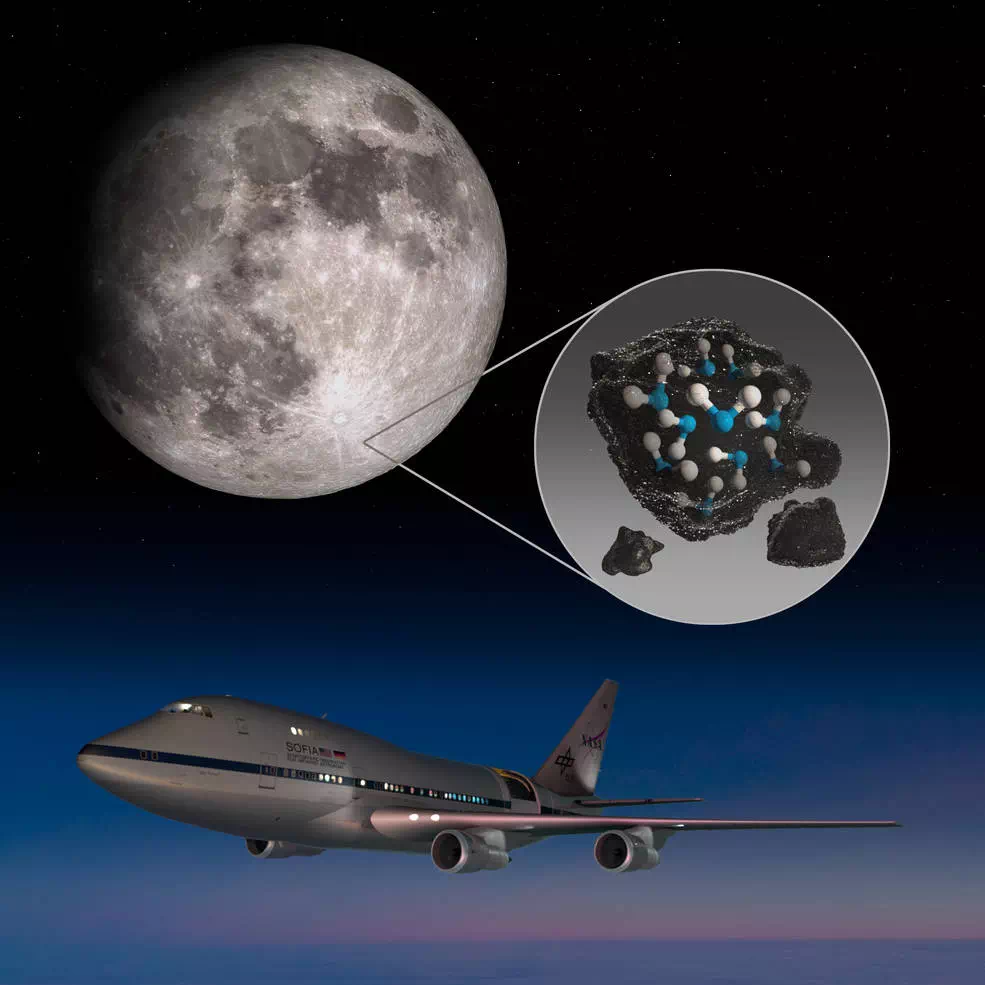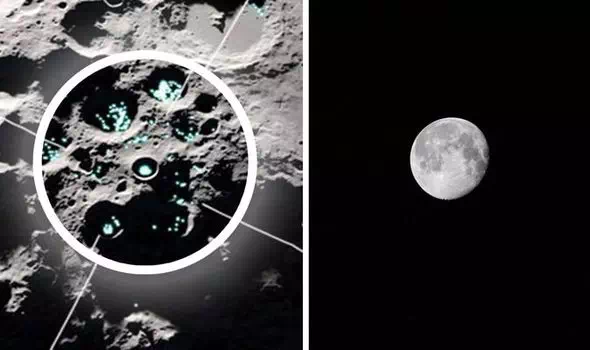

"We had indications that H2O – the familiar water we know – might be present on the sunlit side of the moon" Paul Hertz, director of the astrophysics division in the science mission directorate at NASA headquarters in Washington, said in a statement.
The discovery was made by NASA's Stratospheric Observatory for Infrared Astronomy (SOFIA), which analyzes the atmospheres of distant planets and moons.
Dubbed the world’s largest airborne observatory, SOFIA is a modified 747 that flies high in the Earth's atmosphere to provide its nearly 9-foot telescope with a clear view of the universe and objects in our solar system, NASA said.
Previous observations of the Moon’s surface detected some form of hydrogen, but were unable to distinguish between water and its close chemical relative, hydroxyl (OH). Data from this location reveal water in concentrations of 100 to 412 parts per million – roughly equivalent to a 12-ounce bottle of water – trapped in a cubic meter of soil spread across the lunar surface.
The lead researcher, Casey Honniball, a postdoctoral fellow at NASA’s Goddard Space Flight Center, said at a news conference that she wanted to make it clear the SOFIA study had not found puddles on the moon. Rather, the identified hydrogen and oxygen molecules are so far apart they are neither in liquid or solid form, she said.
Researchers suggest that in some cases tiny patches of ice might exist in permanent shadows no bigger than a penny.
The Artemis program is a plan to send the first woman and next man to the lunar surface in 2024.